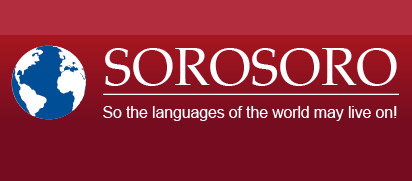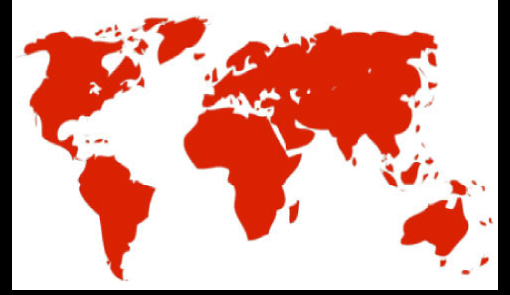Print  |
|


Xârâcùù
Page created in collaboration with Claire Moyse-Faurie (Research Director, LACITO-CNRS); proofreading and additional data by Stéphanie Geneix-Rabault, Annick Kasovimoin, and Weniko Ihage for the Académie des Langues Kanak.
Data on the Xârâcùù language
Alternative names: language of Thio-Canala
Area: New Caledonia, Xârâcùù custom area (aire coutumière). Xârâcùù is spoken in the villages of Canala municipality, as well as in Thio (Thio village, Ouroué and Thio-Mission (St-Philippo I), Ouindo, Kouaré), and La Foa municipality (villages of Ouipoin and Koindé). It is in contact with Xârâgurè in the villages of St-Michel, St-Pierre, St-Paul, as well as with the Boulouparis tribes: Nassirah, Kouergoa, Ouitchambo et Ouinané. Xârâcùù is spoken among members of the Koh tribe, Kouaoua municipality, and blends with Tîrî in the Sarraméa municipality.
Dialectal variations: Xârâcùù is spoken over a vast and rugged area reaching across the central range from Canala to La Foa, spreading from Kouaoua to Thio along a coastline punctuated with large hills, and up to the high transverse valleys. Such geographical scattering, including enclaves that remain relatively isolated, explains the phonetic and lexical variations from one valley to another – variations that make it possible to locate the specific origins of the speakers. For instance, in spite of the /s/, /ʃ/, and /x/ opposition applying to the entire Xârâcùù area, a “roofing awl” is [se] in Canala and [ʃe] in Nakéty, while “one” is be [ʃa:] in Canala and [xa:] in Thio.
Classification: Like all the other Kanak languages (except Fagauvea), Xârâcùù belongs to the distant Oceanic branch of the Austronesian family. The Kanak languages of Grande Terre and the Loyalty Islands form their own subgroup of the Oceanic branch. And among the Kanak languages of Grande Terre, Xârâcùù belongs to the southern language group, alongside Ajië, Tîrî, and Xârâgurè. Xârâcùù is quite close to Xârâgurè, and is spoken in the same custom area.
Number of speakers: 5,729 speakers over 14 years old, according to the latest census (ISEE 2009). One third of them live outside the Xârâcùù area, mainly around Nouméa. The two remaining thirds essentially live on the East coast of Grande Terre, in the Canala and Thio municipalities. A certain number of aged people speak Xârâcùù only.
Status: Like all Kanak languages, Xârâcùù is part of the 75 languages of France, and since the Nouméa Accord of 1998, recognized in New Caledonia as a language of education and culture. It is used as a common language in the Xârâcùù custom area.
Vitality & Transmission: Xârâcùù is not considered endangered by UNESCO, it is one of the best-maintained Kanak languages as it is spoken in every municipality of the Xârâcùù custom area, including 90% of the population in Canala. Xârâcùù is the 4th most widely spoken Kanak language in New Caledonia, following Drehu, Nengone and Paicî. Besides the language being taught in school, Xârâcùù is used on a daily basis in most homes, thus strengthening transmission to the younger generations.
The Austronesian migrations reached the Caledonian Islands some 3,300 ago. The linguistic diversification we witness today in New Caledonia developed in a context of insularity, where a form of “egalitarian bilingualism” (as described by A.-G. Haudricourt) and the will for particular identity appropriation favoured both the differentiation and the preservation of Kanak languages. Yet the teaching of French, made compulsory in every school in 1863, contributed to marginalise them – except those chosen by protestant missionaries in their enterprise of evangelisation.
Script: The script in use today was elaborated in the 1980s by LACITO-CNRS linguists. It takes into consideration the phonological identity of the language, practical factors (using diacritics available on ordinary keyboards), and the need to harmonise notation for the different languages of Grande Terre.
Media: A CD-ROM containing text in Xârâcùù and Xârâgurè has been developed by the Tjibaou Cultural Centre, based on recordings made by Claire Moyse-Faurie in the 1980s. Six recordings in Xârâcùù, including verbatim and a French translation, are available on the LACITO website.
In addition, the Sorosoro program went filming on Xârâcùù territory in October/November 2010. Several short films are being produced from data collected throughout these sessions. They will available on this website from the end of September 2011, including an interview with teacher and Kanak activist Marie-Adèle Jorédié on her language and the “Bb lecture” project.
Literature: Two dictionaries have been published, one Xârâcùù/English-English/ Xârâcùù by G.W. Grace (1975), and the other, Xârâcùù/French-French/Xârâcùù by C. Moyse-Faurie and M.-A. Néchérö-Jorédié (1986, 2nd ed. 1989). A grammar textbook (Moyse-Faurie) was published in 1995, as well as several linguistic articles; oral tradition texts appear scattered over various publications. Based on this grammar, a school textbook has been developed by André Ba Duong Nguyen in collaboration with retired educator Kamilo Ipere, and published by the Kanak Culture Development Agency in 2007.
Education: In March 1985, under the pressure of the pro-independence parties, a “Kanak popular school” (EPK – École Populaire Kanak) was created in Canala, where the entire education from kindergarten to the end of primary school was delivered “in language”, with French taught as a second language. The EPKs ran until the beginning of the 2000s, and eventually shut down. Nowadays Xârâcùù is also part of the programs at the Canala and Thio junior high schools, although the language still hasn’t been approved as a relevant option for Baccalauréat, the French secondary school certificate.
Sociolinguistic details
On a linguistic level, the Xârâcùù custom area is not homogeneous. While it does count the highest number of speakers, while it is widely used as a common language by the local Kanak population, Xârâcùù isn’t everyone’s language. Some 300 people speak Haméa (language of Méa), essentially in the tribes living across the ranges above Kouaoua, in Konoye, Wérupimé, and Wââbe (Méchin), in Facha, and in a few families in Méa Mébara. People speak Ajië (Houaïlou) from Méa Mébara to Kouaoua, and in Ceynon; Tîrî from Couli to Sarraméa (c.a. 500 speakers); Xârâgurè in Thio-Mission (Saint Philippo II), partly in Saint-Michel, Saint-Paul, and Saint-Pierre, and in every village located on the coast between Thio and the N’Goye river (c.a. 500 speakers); in Wîînârî (Ouinané), the adults are Xârâgurè/Drubea bilinguals, the younger generation mostly speaks French. Everywhere else, people speak Xârâcùù.
Linguistic details
Xârâcùù is one of the best-documented Kanak languages of Grande Terre. Its phonology is quite rich, with 26 consonants and 34 long and short vowels. The syllabic structure of Xârâcùù does not allow any succession of consonants, or final consonants. Stress is demarcative: it applies to the first mora of three-and-above mora units, or to the first two moras of units exceeding three moras. Xârâcùù is a “stress-bearing morpheme” language, with morphemes linked together though a coupling process (Rivierre, 1978). Derivation and composition processes are rich and complex; they form the main body of Xârâcùù morphology. The word order is generally in SVO. Subjects can be thrown back after verbs, however, and in that case they are introduced by agentive prepositions. While Xârâcùù is an omni-predicative language, it does show a verb-noun opposition quite marked by very distinct nominal and verbal contexts. Xârâcùù also includes specific numeral classifiers (yams, fish, long objects, plants). The numbering system is both quinary and vigesimal.
Bibliography
Grace George William, 1975, English-Canala Dictionary, Canberra, Australian National University, Pacific Linguistics, B-26.
—1986, Hypotheses about the phonological history of the language of Canala. New Caledonia, Te Reo 29, pp. 55-67.
Haudricourt A.-G. et al., 1979, Les langues mélanésiennes de Nouvelle-Calédonie, Nouméa, Publication de la D.E.C. coll. Eveil n°13.
Moyse-Faurie Claire, 1989, Structures actancielles et classes verbales en xârâcùù, Actances 4, pp. 99-125.
—1991a, “Relational morphemes and a transitivising suffix in Xârâcùù (New Caledonia)”, in R. Blust (éd.), Currents in ethnolinguistica in honour of George W. Grace, Canberra, Australian National University, Pacific Linguistics, C-117, pp. 305-320.
—1991b, “La langue xârâcùù (Nouvelle-Calédonie)”, in D. Tryon (ed.), Comparative Austronesian Dictionary (in three parts), Berlin, Mouton de Gruyter.
—1995, Le xârâcùù. Langue de Thio-Canala (Nouvelle-Calédonie). Eléments de syntaxe. Paris, Peeters, lcp 10.
—1998, Relations actancielles et aspects en drehu et en xârâcùù, Actances 9, pp. 135-145.
—2011, “Xârâcùù”, in Bonvini, Emilio, Joëlle Busuttil et Alain Peyraube (dir.), Dictionnaire des langues, PUF, 1220-1229.
Moyse-Faurie Claire et Marie-Adèle Néchérö-Jorédié, 1989 (2e éd), Dictionnaire xârâcùù-français (Nouvelle-calédonie), Nouméa, Edipop.
Néchérö-Jorédié Marie-Adèle, 1988, “A Kanak People’s School (interview)”, in M. Spencer, A. Ward et J. Connell (eds), New Caledonia. Essays in nationalism and dependency, St Lucia, University of Queensland Press, pp. 198-218.
Nguyen Ba Duong, André et Kamilo Ipéré. 2007. Apprendre le xârâcùù, langue de Thio-Canala (Nouvelle-Calédonie). Aprroche linguistique. Nouméa, Agence de Développement de la Culture Kanak.
Nguyen Ba Duong, André, Kamilo Ipéré et Marcel Até, 2001. Contes et légendes en Xârâcùù : langue de Thio-Canala (Nouvelle-Calédonie), Mairie de Canala.
Rivierre Jean-Claude, 1978, “Accents, tons et inversion tonale en Nouvelle-Calédonie”, Bulletin de la Société de Linguistique de Paris, t. 73, fasc. 1, pp. 415-443.
A few links for further information
Académie des Langues Kanak website
Académie des langues Kanak, pages on Xârâcùù
DGLFLF Corpus de la parole website: text corpus in 13 Kanak languages (Drehu, Ajië, Bwatoo, Cèmuhî, Fagauvea, Iaai, Nââ Kwényï, Nêlêmwa, Nemi, Nengone, Xârâcùù, Xârâgurè, Yuanga), Wallisian and Futunan.
DGLFLF Corpus de la parole webpages on Xârâcùù
Kanak Culture Development Agency – Tjibaou Cultural Centre: media library members have online access to numerous text corpora in Kanak languages.
CDP-NC website: Languages and Cultures in New Caledonia section.
LACITO (“Oral tradition languages and civilisations laboratory”) and CNRS: Oceanic corpus
Please do not hesitate to contact us should you have more information on this language: contact@sorosoro.org








